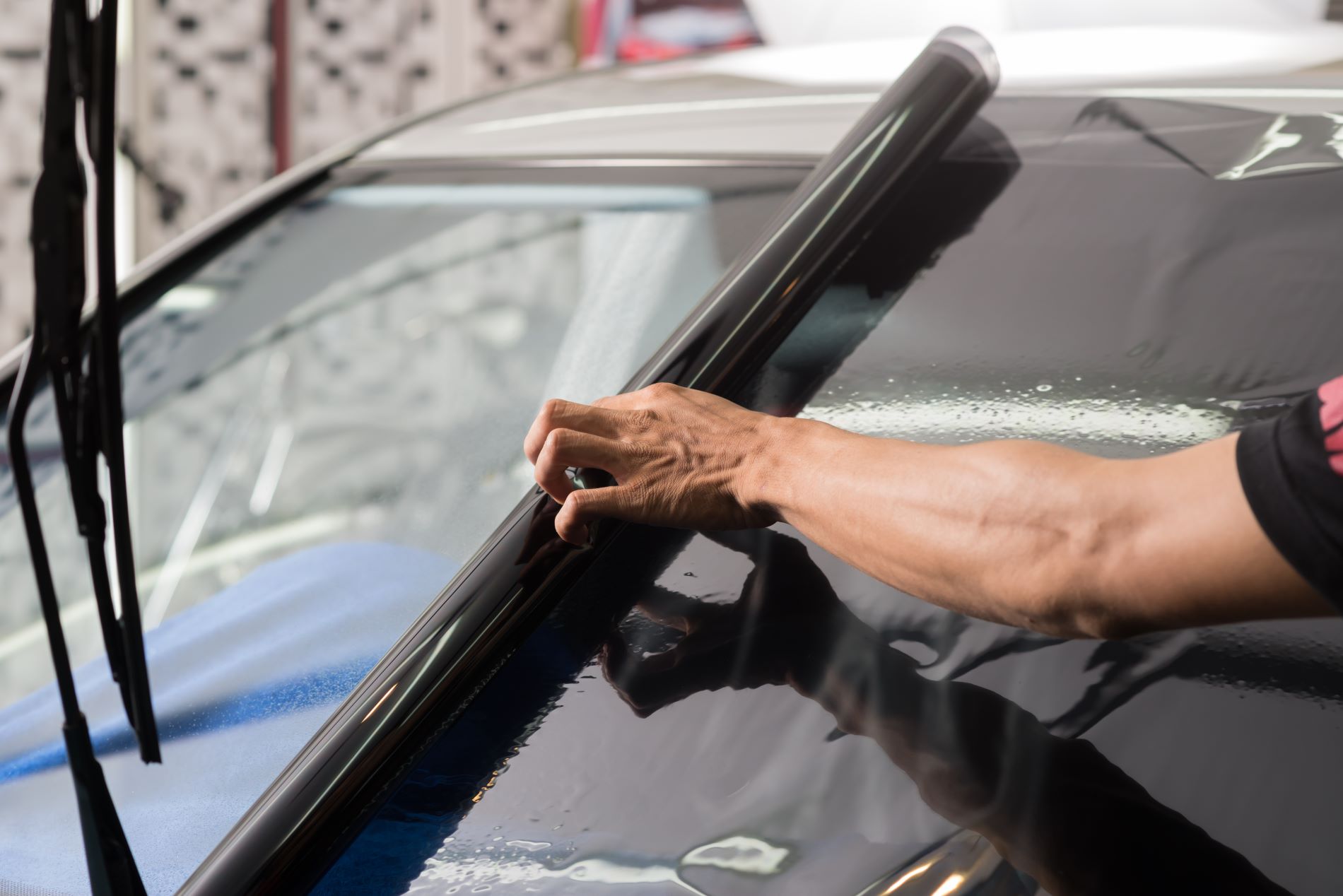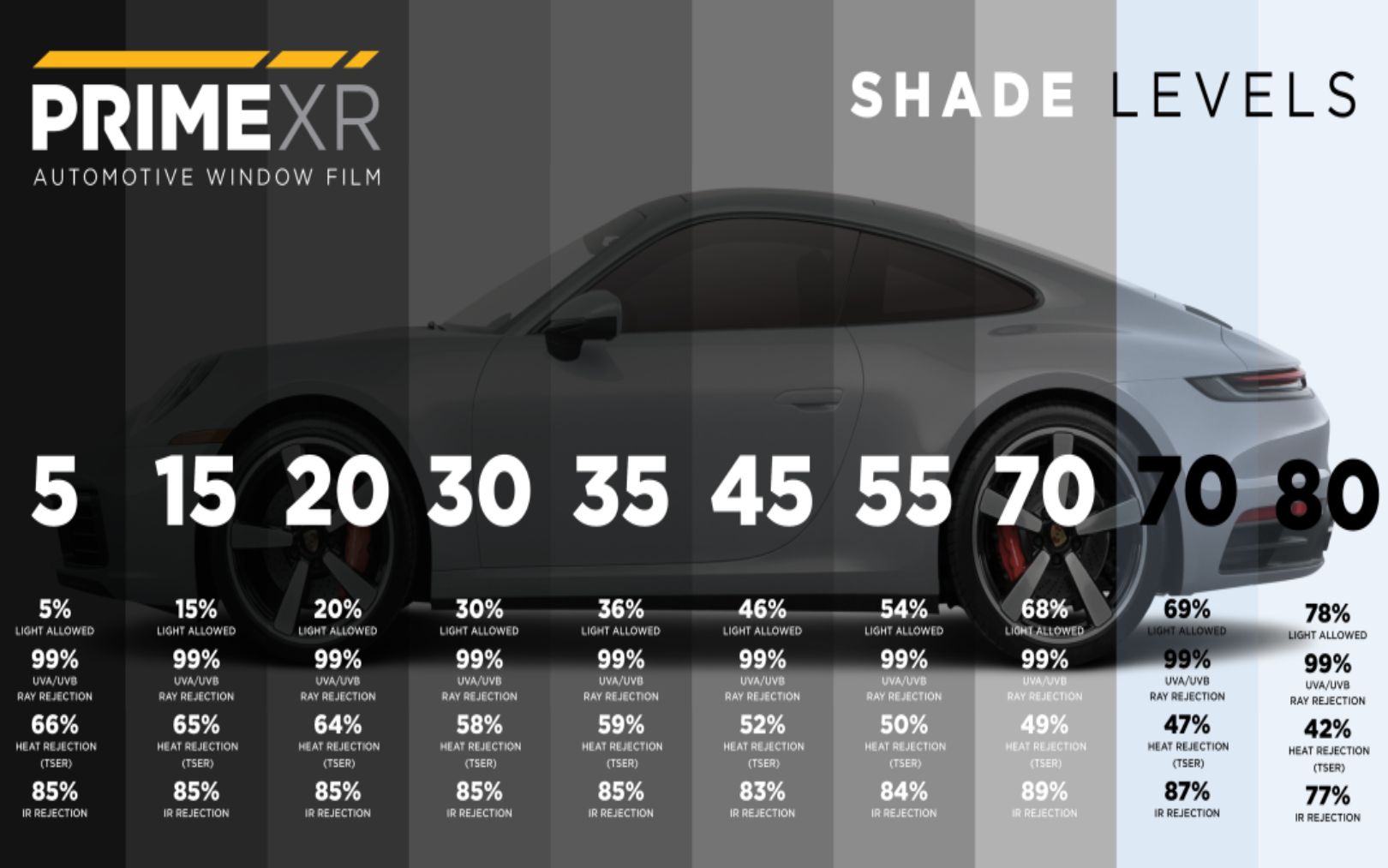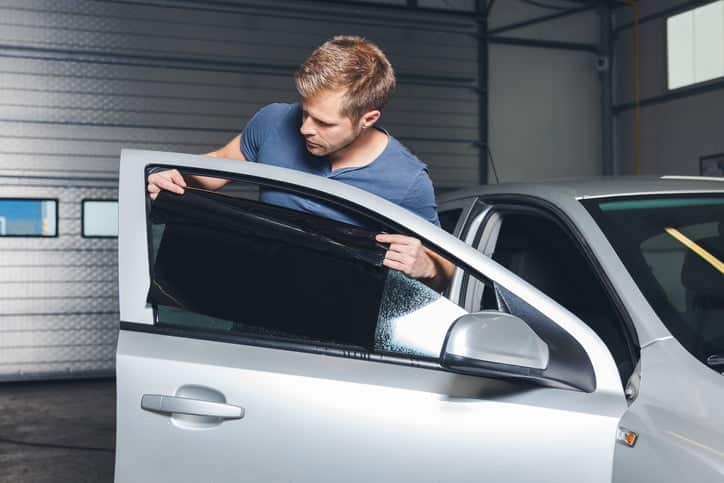A Comprehensive Overview to Comprehending Vehicle Window Color and Its Advantages
Automobile window tinting serves greater than just an aesthetic function for lorries. It offers different kinds, each with unique attributes and benefits. Recognizing these alternatives, along with lawful regulations and upkeep tips, is crucial for any car owner. The benefits may significantly enhance driving comfort and automobile long life. As one discovers the nuances of home window tinting, the question emerges: what kind of color is best fit for individual demands?
Recognizing Automobile Home Window Color: What It Is and Exactly how It Works
Auto home window tint functions as a protective barrier that boosts vehicle aesthetics while providing practical benefits. This thin movie is put on the indoor surface of vehicle windows, reducing glow and blocking hazardous ultraviolet (UV) rays from the sun. By filtering system sunlight, car window tint helps to control the indoor temperature of the car, resulting in enhanced comfort for travelers and minimized dependence on air conditioning.Additionally, it safeguards the automobile's interior from fading, preserving both furniture and dashboard products. The color can likewise boost personal privacy, making it extra difficult for outsiders to see inside the lorry. Certain types of home window color can boost security; in the occasion of a crash, the movie helps hold shattered glass together, reducing the threat of injury from flying shards. In general, automobile window color offers both visual and useful objectives, making it a prominent option amongst car proprietors.
Types of Home Window Color: A Review of Options
When thinking about window color alternatives, numerous types are readily available, each with distinct characteristics. Colored, metalized, and ceramic window colors supply differing levels of warmth being rejected, UV defense, and visual charm. Comprehending these distinctions can aid vehicle owners make educated selections based upon their choices and needs.
Colored Window Tint
Colored window tint stands for a preferred selection among cars and truck proprietors looking for a budget friendly and effective means to boost their automobile's looks and personal privacy. This kind of tint is developed by putting a layer of color in between an adhesive layer and a safety covering, leading to a darkened appearance that reduces glow and boosts visual convenience. While dyed window color properly blocks dangerous UV rays, it may not offer the very same degree of heat rejection as various other tint types. In addition, its shade can fade in time, possibly lessening its performance. Regardless of these downsides, dyed window tint stays popular for its cost-effectiveness and capacity to supply a smooth, elegant aim to various car models.
Metalized Window Color
Metalized home window color supplies an equilibrium of style and performance, making it a prominent choice amongst vehicle owners. This sort of color incorporates metal bits within the film, boosting both visual appeal and warmth being rejected. The reflective high quality of metalized tint helps to minimize glow and enhance personal privacy, while also supplying UV defense, which safeguards the lorry's interior. Additionally, metalized window color can strengthen home window toughness, potentially protecting against smashing throughout crashes. Nevertheless, it is essential to keep in mind that the metallic elements can hinder electronic signals, such as general practitioner and cellular phone reception. In general, metalized home window tint gives an efficient service for those seeking a mix of appearance, sun, and toughness security for their lorries.
Ceramic Window Color
Ceramic window tint stands for a sophisticated alternative in the spectrum of vehicle home window movies, supplying distinctive benefits over conventional colors. Unlike dyed or metalized films, ceramic tints utilize sophisticated ceramic particles, which effectively turn down heat and UV rays without compromising presence. This technology ensures that lorries remain cooler, lowering dependence on a/c and boosting gas efficiency. Additionally, ceramic home window colors are less likely to interfere with electronic tools, such as general practitioner or mobile signals, making them a practical choice for modern-day vehicles. Furthermore, their durability and scratch resistance contribute to a much longer lifespan compared to other sorts of tints. In general, ceramic home window tint gives superior performance, convenience, and protection, making it a preferred choice for critical vehicle owners.
Advantages of Vehicle Window Tint: Beyond Aesthetics
While many individuals associate car home window tint with boosted design, its benefits expand far past plain aesthetics. One substantial advantage is warm reduction; home window color can obstruct as much as 99% of damaging UV rays, keeping the interior colder and protecting upholstery from fading. This not only enhances convenience during heat but likewise reduces dependence on a/c, leading to enhanced gas efficiency.In enhancement, car home window color offers an added layer of personal privacy and protection. Tinted windows make it challenging for outsiders to see inside the vehicle, which can discourage theft and secure valuables. In addition, several tints enhance the glass, reducing the chance of shattering in the event of a crash, thereby enhancing safety.In addition to these functional benefits, automobile home window color can also add to glow decrease, boosting visibility for chauffeurs and travelers alike. This multifaceted technique to comfort and safety makes home window tint a valuable investment for vehicle owners.
Lawful Factors To Consider: Tinting Rules by State
Before devoting to auto home window color, automobile owners have to navigate a complex landscape of tinting guidelines that vary by state. Each state has particular laws governing the acceptable levels of color darkness and reflectivity for various home windows, consisting of windshields, front side windows, and back home windows. These laws commonly consist of visible light transmission (VLT) portions, official website which dictate how much light these details can pass with the colored glass.Some states permit darker tints on rear home windows while restricting front side and windshield tints for security reasons. In addition, specific states might require a certificate from the supplier to verify conformity with tinting regulations. Going against these regulations can cause penalties, necessary removal of the color, or both. Subsequently, it is essential for automobile proprietors to research their state's legislations completely to ensure lawful conformity before installing home window tint. This persistance can conserve time and cash over time.
Selecting the Right Color: Variables to Consider
When picking the ideal home window tint for a lorry, numerous vital factors enter into play. Color darkness levels, UV protection rankings, and conformity with lawful regulations are necessary considerations to ensure both looks and performance - Car Glass Tinting. Examining these elements will certainly help people make an informed choice that meets their needs and follows regional regulations
Color Darkness Levels
Picking the appropriate tint darkness level is essential for attaining the preferred balance between looks and functionality in automobile window tinting. Various states have varying legal laws pertaining to color darkness, which can impact the option. Normally, tints are gauged in percentages, with lower percents suggesting darker tones. Darker colors supply enhanced privacy and a streamlined appearance yet can lower exposure, specifically during the night. Alternatively, lighter tints keep an even more open feel, guaranteeing sufficient visibility while still providing some warm and glow decrease. Individuals need to consider their driving practices, regional legislations, and individual preferences when choosing. Ultimately, the best color darkness degree improves the vehicle's appearance while ensuring security and compliance with legal criteria.
UV Defense Rating
Color darkness levels play a substantial duty in the total effectiveness of vehicle window tinting, but one more important element to assess is the UV defense ranking of the picked tint. This rating suggests the percentage of damaging ultraviolet rays that the color can obstruct. Top quality tints typically offer 99% or even click to read more UV protection, safeguarding passengers and the car's interior from sunlight damages. Long term exposure to UV rays can bring about skin troubles and fading of upholstery, making a high UV security rating vital for health and wellness and long life. When choosing home window tint, customers need to prioritize this rating alongside darkness degrees to ensure maximum comfort and safety while driving. Recognizing these aspects help in making an educated decision when investing in car home window tinting.
Legal Laws Conformity
Comprehending regional lawful laws is crucial for anybody thinking about vehicle window tinting. Each state or region has particular laws controling the allowed degrees of color darkness and reflectivity for different home windows. These guidelines often define the noticeable light transmission percent, determining just how much light can travel through the tinted glass. Non-compliance can result in fines, required removal of the color, or problems during automobile examinations. Additionally, some areas might have restrictions on using certain tinting materials, calling for customers to select products that meet security standards. As a result, it is very important for vehicle proprietors to research their regional laws completely before choosing home window tint to ensure compliance and stay clear of prospective legal issues.
Installment Refine: do it yourself vs. Specialist Providers
How does one decide between a do it yourself setup and working with expert solutions for automobile home window tinting? The choice usually rests on spending plan, experience, and desired outcomes. A DIY strategy can be cost-effective, allowing people to minimize labor costs. It requires a certain level of ability and expertise about the tinting procedure. Those who are meticulous and individual may find success with do it yourself sets readily available in the market.Conversely, expert services supply expertise and high-grade products, making certain a flawless finish. Experts often assure their job, providing peace of mind versus prospective issues such as peeling or bubbling. Additionally, they know with local laws concerning tinting, which can be intricate for the typical auto owner.Ultimately, the decision shows a balance in between cost, individual capability, and the expected top quality of the tinting work. Each alternative has its advantages, and the finest selection depends on specific scenarios and preferences.
Maintenance Tips: Keeping Your Tint in Leading Condition
Keeping the look and capability of home window color requires routine focus and treatment, especially in varying climate condition. To maintain the color, it is vital to avoid using unpleasant cleaning products, which can harm the film or scratch. Car Glass Tinting. Rather, soft microfiber fabrics and gentle, ammonia-free cleaners need to be used for cleansing the tinted surfaces.Furthermore, it is advisable to wait at least 1 month after setup before cleaning the windows to permit the color to completely stick. Parking in shaded locations or making use of sunshades can help in reducing the fading impacts of UV rays and extend the tint's life-span. Normal assessments for bubbles, peeling off, or discoloration are suggested, as very early discovery can assist in repairs. Avoiding severe temperature variations, such as pushing warm home windows in cool weather condition, will aid preserve the color's integrity and appearance over time.
Frequently Asked Questions

For How Long Does Window Tint Typically Last on a Vehicle?
Home window color commonly lasts between 5 to 10 years, depending on aspects such as top quality, application, and ecological conditions. Routine maintenance and appropriate care can expand its lifespan, making sure perfect efficiency and look in time.
Can Home Window Tinting Damages My Vehicle's Original Glass?
Window tinting, when applied properly, does not damage a cars and truck's initial glass. Nevertheless, improper installation or low-quality materials might cause problems like bubbling or peeling, possibly influencing the glass's integrity in time.
Is Window Tinting Safe for All Sorts Of Vehicles?

Will Window Tinting Space My Cars And Truck Service Warranty?
The inquiry of whether home window tinting gaps a car guarantee frequently depends on the supplier's plans. Usually, if the color does not damage the automobile, service warranties typically remain intact. However, speaking with the dealer is recommended.

Can I Eliminate Home Window Tint Myself if Needed?
Eliminating window color oneself is possible, however it requires mindful focus to avoid damaging the glass. Individuals must make use of appropriate devices and techniques to assure an effective removal without leaving sticky residue or scrapes behind. While dyed home window color properly blocks hazardous UV rays, it may not use the very same degree of warmth denial as various other tint types. Ceramic window tint represents an innovative alternative in the range of auto window movies, providing distinctive advantages over traditional colors. Prior to devoting to auto window color, vehicle owners need to browse a complicated landscape of tinting guidelines that differ by state. These policies often include visible light transmission (VLT) portions, which determine exactly how much light can pass via the colored glass.Some states allow darker tints on rear windows while restricting front side and windscreen colors for safety and security factors. Color darkness degrees play a substantial duty in the overall effectiveness of car window tinting, however one more crucial variable to review is the UV defense rating of the chosen tint.
Comments on “The Science Behind Car Glass Tinting: How It Functions”